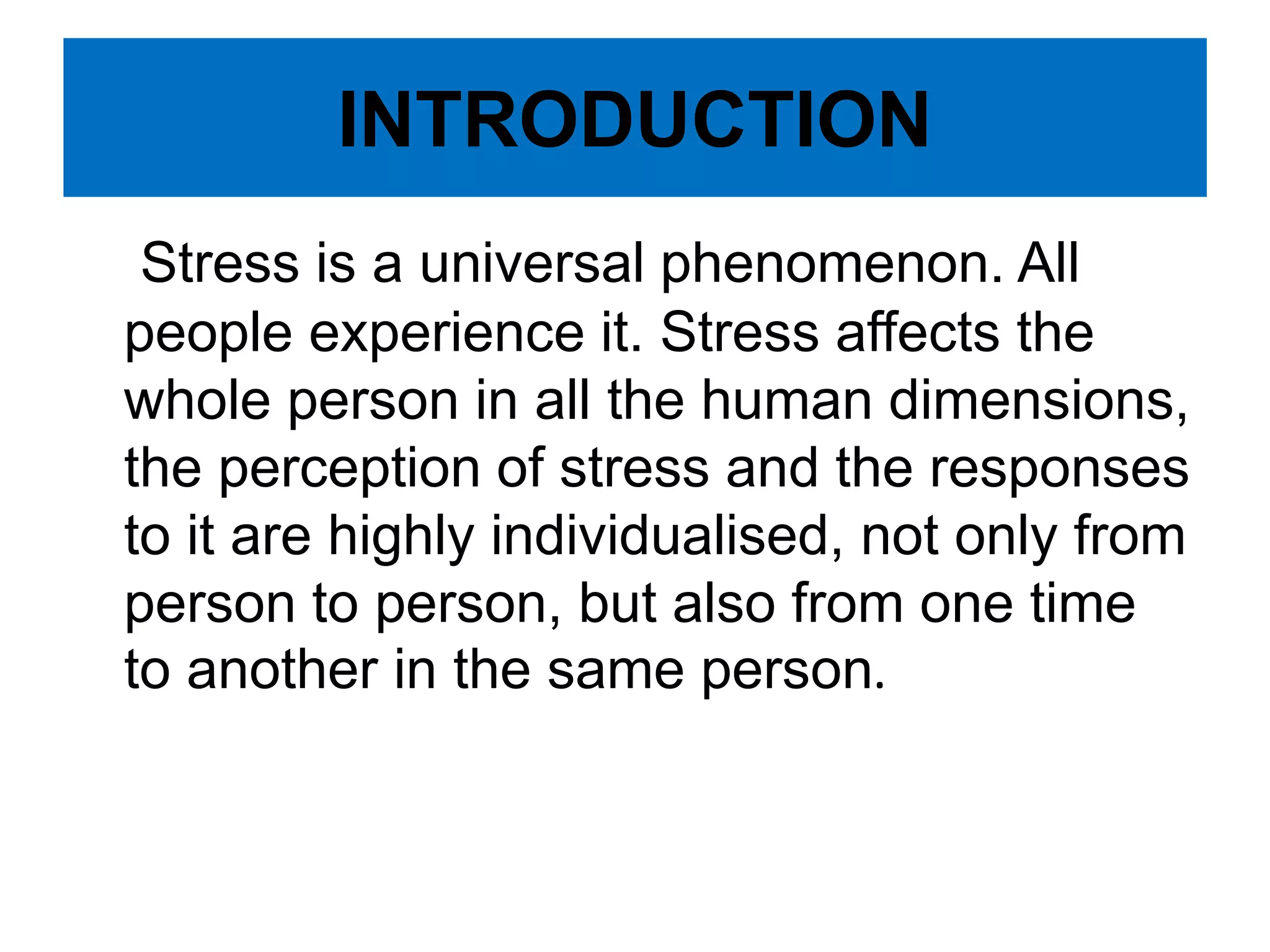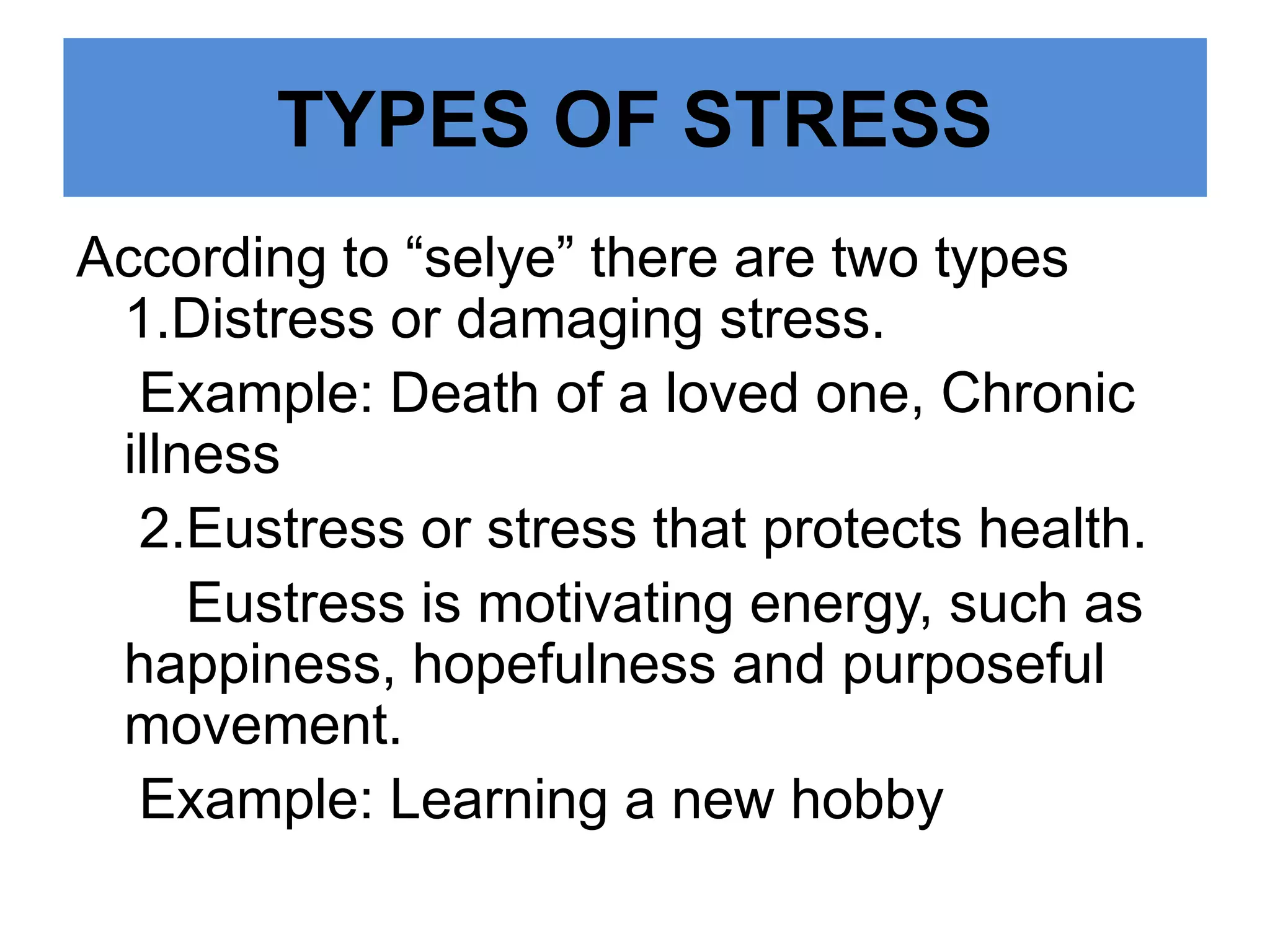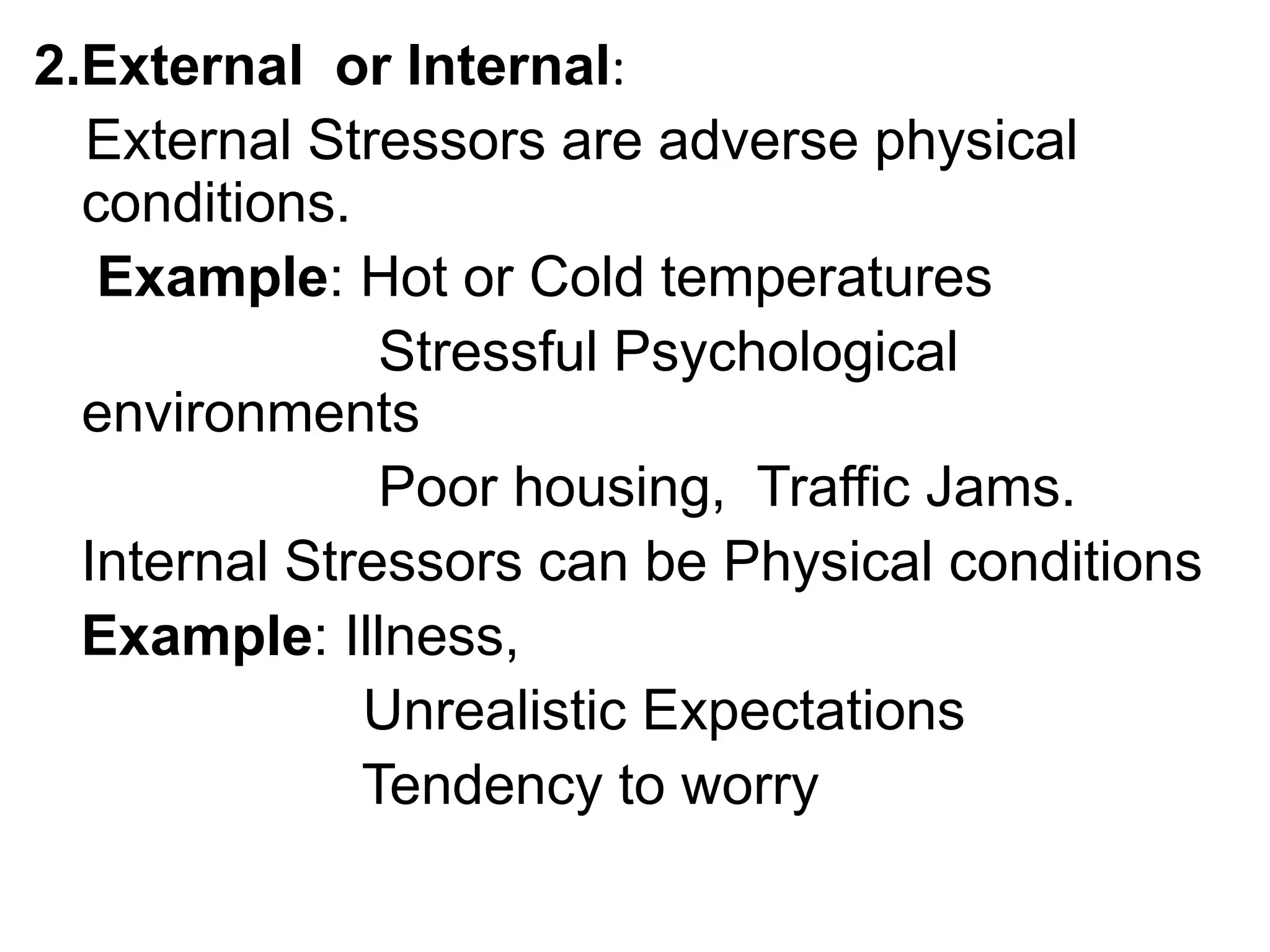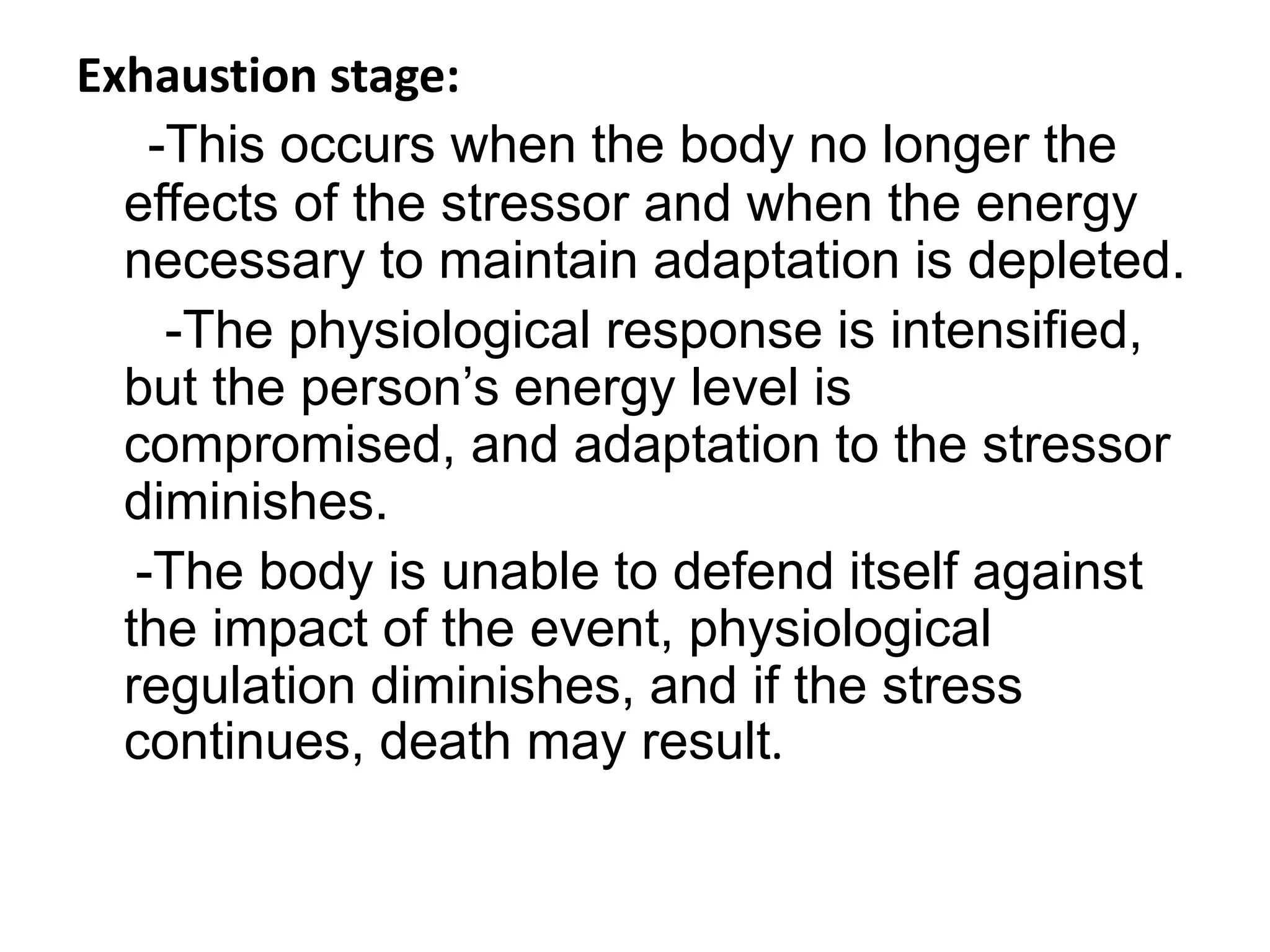This document defines stress and discusses its causes, effects, and coping mechanisms. It states that stress is the body's nonspecific response to demands for change and can be caused by life events, physical/psychological/social factors, and environmental/internal stressors. Both short-term and long-term effects of stress are outlined, affecting physical and mental health. Adaptation and coping strategies like problem-focused coping, social support, and relaxation techniques are recommended to manage stress. Nurses are encouraged to help patients identify stressors and adopt healthy coping behaviors.







































